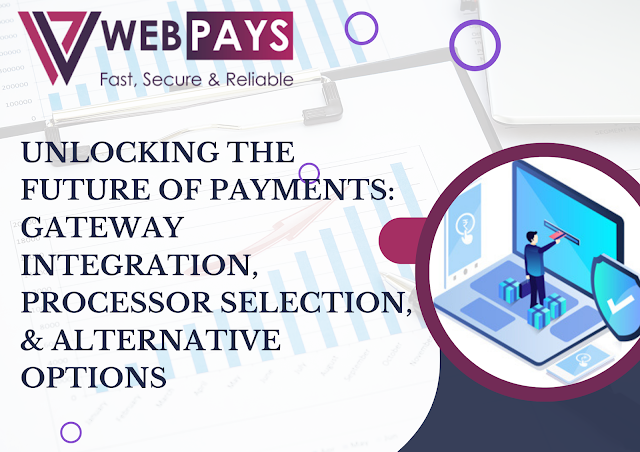Unlocking the Future of Payments: Gateway Integration, Processor Selection, & Alternative Options


In the ever-evolving landscape of
e-commerce, merchants face a constant battle against fraudulent transactions.
Technology is advancing, and so are the strategies used by scammers. To counter
this, high risk
payment gateway have emerged as a solution, promising to safeguard
merchants from potential financial losses. However, the question lingers: do
these payment gateways truly deliver on their promises, or is it all just hype?
High-risk payment gateways are
specialized tools designed to handle transactions for businesses deemed as
high-risk by traditional financial institutions. These businesses often operate
in industries with a higher likelihood of chargebacks, such as online gaming,
adult content, forex trading, CBD, e-cigarette, or subscription-based services.
Conventional payment processors are hesitant to work with these merchants due
to the elevated risk associated with their operations.
One of the primary selling points
of high-risk payment gateways is enhanced security. These gateways employ
advanced fraud detection mechanisms, machine learning algorithms, and
artificial intelligence to analyze transaction patterns and identify
potentially fraudulent activities in real-time. By doing so, they aim to
prevent unauthorized transactions before they can cause financial harm to the
merchant.
High-risk payment gateways employ
several fraud prevention measures to mitigate risks:
1.
Geolocation and IP Tracking: These gateways analyze the geographic location of the
customer and cross-reference it with the IP address, helping to identify
suspicious transactions from unfamiliar locations.
2.
Device Fingerprinting: By creating a unique fingerprint for each device used in
a transaction, high-risk payment gateways can detect when multiple transactions
originate from the same device, raising a red flag for potential fraud.
3.
Velocity Checks:
Monitoring the speed at which transactions occur helps identify unusual
patterns. For instance, a sudden spike in transactions within a short timeframe
may indicate fraudulent activity.
4.
Behavioral Analysis: Analyzing user behavior during the transaction process allows these
gateways to identify anomalies and flag transactions that deviate from typical
customer behavior.
5.
Two-Factor Authentication (2FA): Implementing an additional layer of security through 2FA
adds an extra barrier for fraudsters, making it more difficult for them to gain
unauthorized access.
While high risk payment
processing boast robust fraud prevention measures, it's essential to
acknowledge that no system is foolproof. Fraudsters are continually devising
new techniques to circumvent security measures, and the cat-and-mouse game
between merchants and fraudsters persists.
1.
False Positives:
One of the challenges faced by high-risk payment gateways is the potential for
false positives. Legitimate transactions may be flagged as fraudulent, leading
to delays, inconveniences for customers, and even lost revenue for merchants.
2.
Evolving Tactics:
As fraud prevention measures become more sophisticated, so do the tactics
employed by fraudsters. Adaptive criminals are quick to identify and exploit
vulnerabilities, making it a constant struggle for merchants to stay one step
ahead.
3.
Cost Considerations: Implementing high-risk payment processing solutions often comes with
additional costs for merchants. While the investment may be justified by the
potential savings from prevented fraud, it's crucial for businesses to assess
the overall impact on their bottom line.
Despite the advanced technologies
powering high-risk payment gateways, the human element remains crucial in the
fight against fraud. Merchants must strike a balance between automated systems
and manual oversight. Regularly reviewing transactions, investigating
anomalies, and staying informed about emerging fraud trends are essential
aspects of a comprehensive fraud prevention strategy.
In addition to technological
solutions, merchants can take a proactive approach by educating their customers
about security best practices. Encouraging the use of secure passwords,
promoting awareness about phishing attempts, and providing clear instructions
on safe online practices can contribute to a more secure transaction
environment.
In the realm of high-risk
e-commerce, the use of specialized payment gateways is a logical response to
the constant threat of fraud. These gateways leverage advanced technologies to
detect and prevent unauthorized transactions, providing merchants with a layer
of protection that traditional payment processors may lack. However, it's
crucial for businesses to approach high-risk payment gateways with a
balanced perspective.
While these gateways offer
valuable tools for fraud prevention, they are not a panacea. Merchants should
remain vigilant, understanding that the landscape of online fraud is dynamic
and requires ongoing adaptation. A holistic approach, combining advanced
technology with human oversight and customer education, is key to effectively
combating fraud and ensuring the long-term success of e-commerce businesses in
high-risk industries.
Comments
Post a Comment